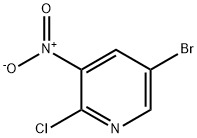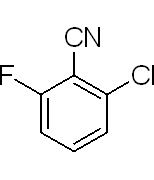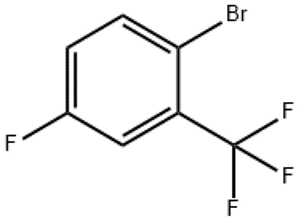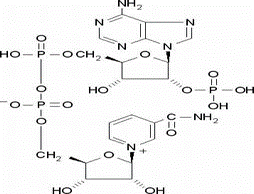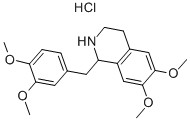5-Bromo-2-chloro-3-nitropyridine(CAS# 67443-38-3)
| Risk Codes | R36/37/38 – Irritating to eyes, respiratory system and skin. R21/22 – Harmful in contact with skin and if swallowed. R41 – Risk of serious damage to eyes R37/38 – Irritating to respiratory system and skin. R25 – Toxic if swallowed R22 – Harmful if swallowed |
| Safety Description | S37/39 – Wear suitable gloves and eye/face protection S26 – In case of contact with eyes, rinse immediately with plenty of water and seek medical advice. S45 – In case of accident or if you feel unwell, seek medical advice immediately (show the label whenever possible.) S36 – Wear suitable protective clothing. |
| UN IDs | 2811 |
| WGK Germany | 3 |
| HS Code | 29333990 |
| Hazard Note | Harmful |
| Hazard Class | 6.1 |
| Packing Group | Ⅲ |
Introduction
2-Chloro-5-bromo-3-nitropyridine is an organic compound. The following is an introduction to its nature, use, preparation method and safety information:
Quality:
2-Chloro-5-bromo-3-nitropyridine is a white solid with a faint odor. It has medium solubility and is soluble in organic solvents such as alcohols and chlorinated hydrocarbons.
Uses: It can also be used for research and laboratory applications.
Method:
The preparation method of 2-chloro-5-bromo-3-nitropyridine can be achieved through a variety of ways. A common method is to achieve the replacement of chlorine and bromine by adding aluminum chloride or other sulfates under the alkaline conditions of 3-bromo-5-nitropyridine. Detailed synthesis methods can be referred to chemical literature or professional manuals.
Safety Information:
This compound is a strong oxidizing agent in organic synthesis and requires care when storing and handling in case of fire or explosion.
Avoid contact with combustibles, reducing agents and flammable substances.
Appropriate protective equipment such as lab gloves, goggles, and gowns need to be worn during handling and handling.
Avoid inhalation, ingestion, or skin contact.
It should be kept dry when stored and avoid contact with moisture in the air.
When disposed of, it should be disposed of in accordance with local regulations and should not be dumped or discharged into the environment.


